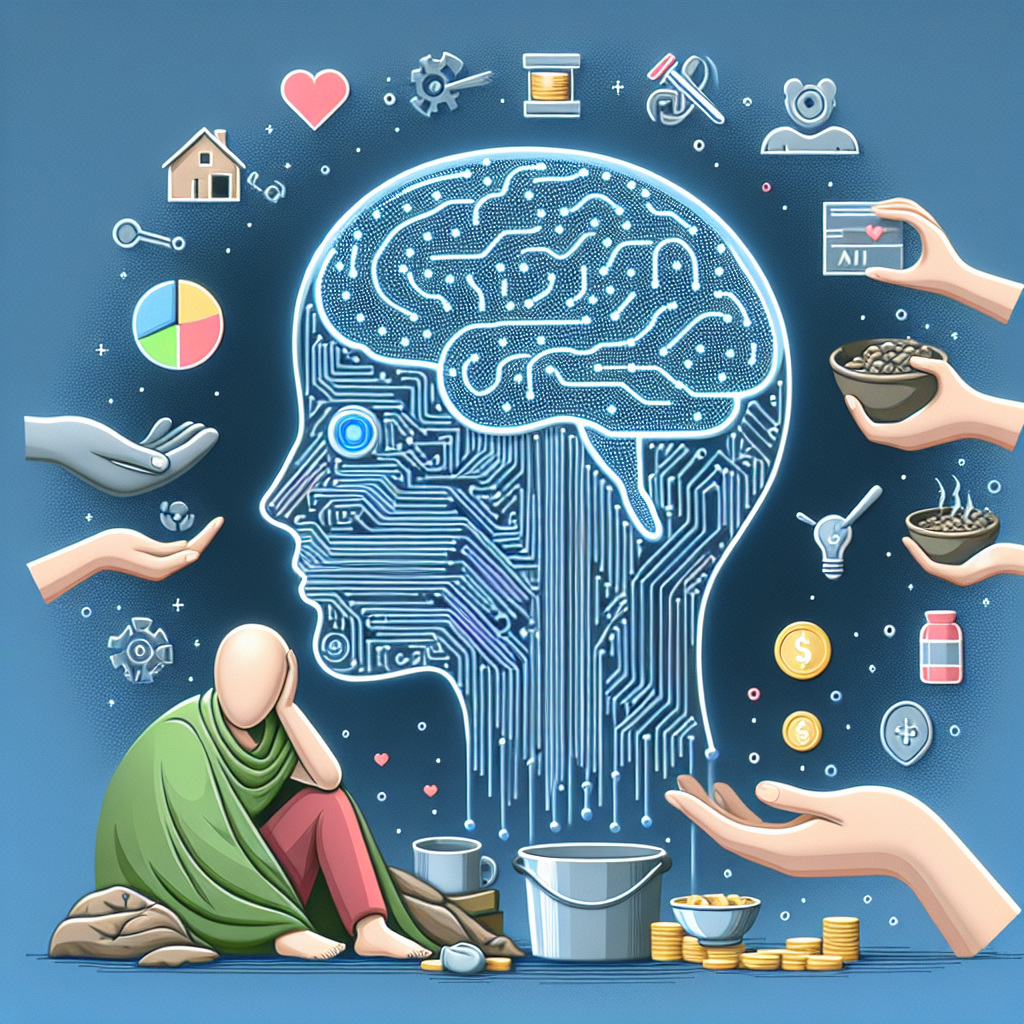The issue of homelessness and poverty is a complex and multifaceted problem that has plagued societies for centuries. In recent years, there has been a growing recognition of the need for innovative solutions to address these issues, and one such solution that has gained traction is the use of artificial intelligence (AI) driven strategies in philanthropy.
AI-driven strategies offer a promising way to address homelessness and poverty by leveraging the power of technology to identify and target those in need, allocate resources more efficiently, and track progress in real-time. In this article, we will explore how AI can be used in philanthropy to address homelessness and poverty, and the potential benefits and challenges of implementing such strategies.
How AI can address homelessness and poverty:
1. Targeted interventions: One of the key advantages of using AI in philanthropy is its ability to analyze vast amounts of data to identify patterns and trends that can help target interventions more effectively. For example, AI algorithms can analyze data on homelessness rates, income levels, and other factors to identify areas with the highest need and target resources accordingly.
2. Predictive analytics: AI can also be used to predict future trends in homelessness and poverty, allowing organizations to plan and allocate resources more effectively. By analyzing data on factors such as unemployment rates, housing prices, and social services, AI algorithms can help organizations anticipate where and when assistance will be needed most.
3. Personalized assistance: AI can also be used to provide personalized assistance to individuals experiencing homelessness or poverty. For example, chatbots powered by AI can provide information on available resources, help individuals navigate social services, and connect them with support networks.
4. Real-time monitoring: AI can help organizations track the impact of their interventions in real-time, allowing them to make adjustments as needed to ensure that resources are being used effectively. By analyzing data on outcomes such as housing placements, job placements, and income levels, organizations can measure the success of their programs and make data-driven decisions.
Benefits of using AI in philanthropy:
1. Efficiency: AI-driven strategies can help organizations allocate resources more efficiently, reducing waste and ensuring that assistance reaches those who need it most.
2. Effectiveness: By targeting interventions more effectively and measuring outcomes in real-time, AI can help organizations achieve better results in addressing homelessness and poverty.
3. Scalability: AI-driven strategies can be easily scaled to reach a larger number of individuals in need, making it possible to have a greater impact on the problem of homelessness and poverty.
Challenges of using AI in philanthropy:
1. Ethical concerns: There are ethical concerns surrounding the use of AI in philanthropy, including issues related to data privacy, bias in algorithms, and the potential for automation to replace human decision-making.
2. Implementation costs: Implementing AI-driven strategies can be costly, requiring investments in technology, training, and infrastructure.
3. Lack of expertise: Many organizations may lack the expertise and resources needed to effectively implement AI-driven strategies, limiting their ability to harness the full potential of this technology.
Overall, AI-driven strategies offer a promising way to address homelessness and poverty through philanthropy, but they also present challenges that must be addressed. By leveraging the power of technology and data, organizations can target interventions more effectively, predict future trends, provide personalized assistance, and track outcomes in real-time. While there are ethical concerns and implementation challenges to consider, the potential benefits of using AI in philanthropy to address homelessness and poverty are significant.
FAQs:
Q: How can AI be used to target interventions for individuals experiencing homelessness?
A: AI algorithms can analyze data on factors such as homelessness rates, income levels, and social services to identify areas with the highest need and target resources accordingly.
Q: What are some ethical concerns surrounding the use of AI in philanthropy?
A: Ethical concerns include issues related to data privacy, bias in algorithms, and the potential for automation to replace human decision-making.
Q: How can organizations measure the impact of their interventions using AI?
A: Organizations can track outcomes such as housing placements, job placements, and income levels in real-time to measure the success of their programs and make data-driven decisions.
Q: What are some of the challenges of implementing AI-driven strategies in philanthropy?
A: Challenges include implementation costs, lack of expertise, and ethical concerns that must be addressed to effectively harness the potential of AI in addressing homelessness and poverty.

